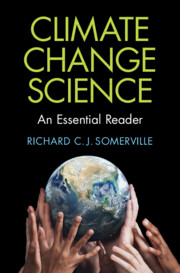Refine search
Actions for selected content:
4 results
Preface
-
- Book:
- Climate Change Science
- Published online:
- 13 November 2025
- Print publication:
- 20 November 2025, pp ix-xv
-
- Chapter
- Export citation

Climate Change Science
- An Essential Reader
-
- Published online:
- 13 November 2025
- Print publication:
- 20 November 2025

Basic Electronics for Scientists and Engineers
- Coming soon
-
- Expected online publication date:
- November 2025
- Print publication:
- 20 November 2025
-
- Textbook
- Export citation

Introduction to Education
- Knowledge, Practice, Engagement
-
- Published online:
- 14 June 2025
- Print publication:
- 02 June 2025
-
- Textbook
- Export citation
